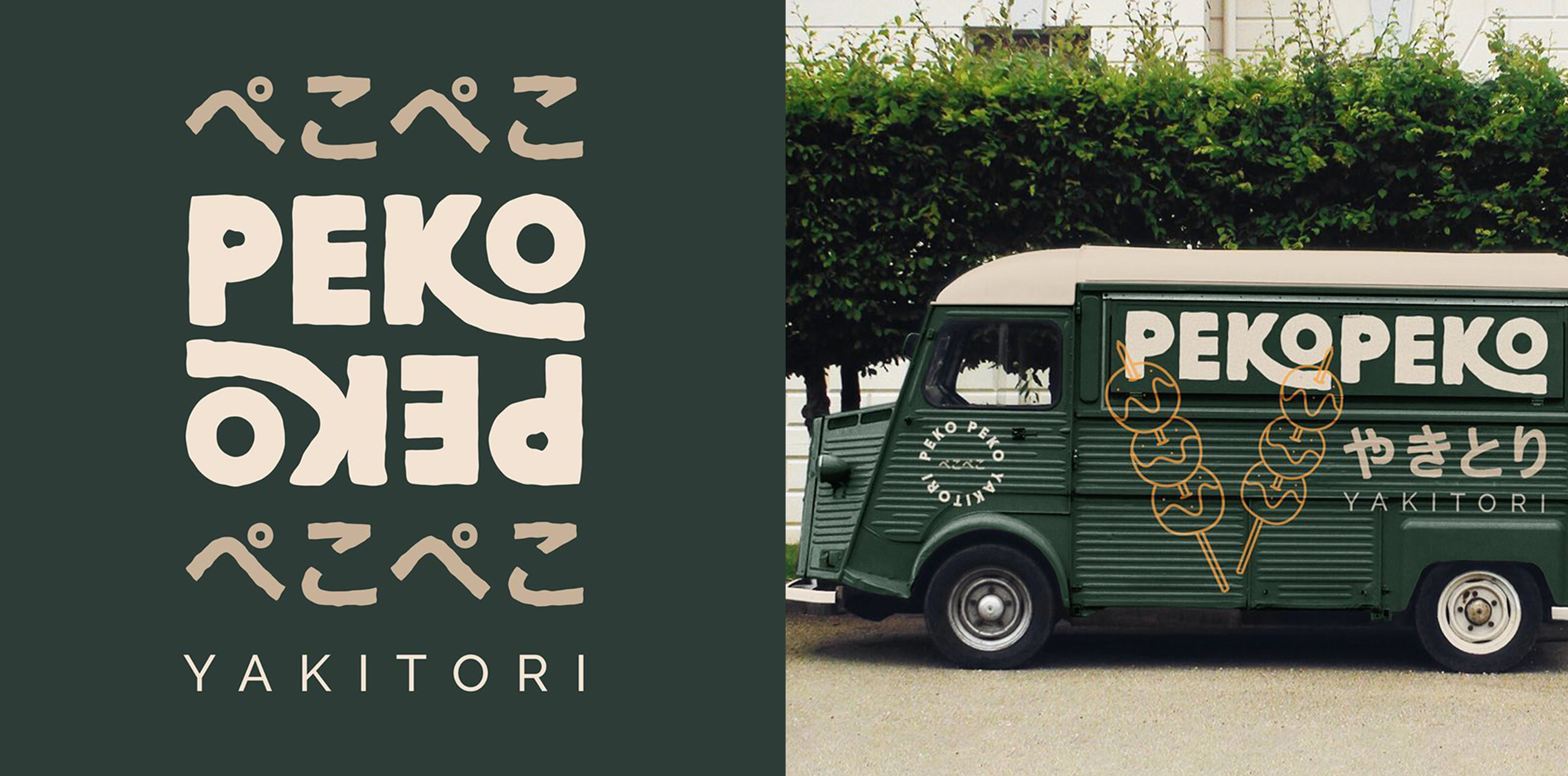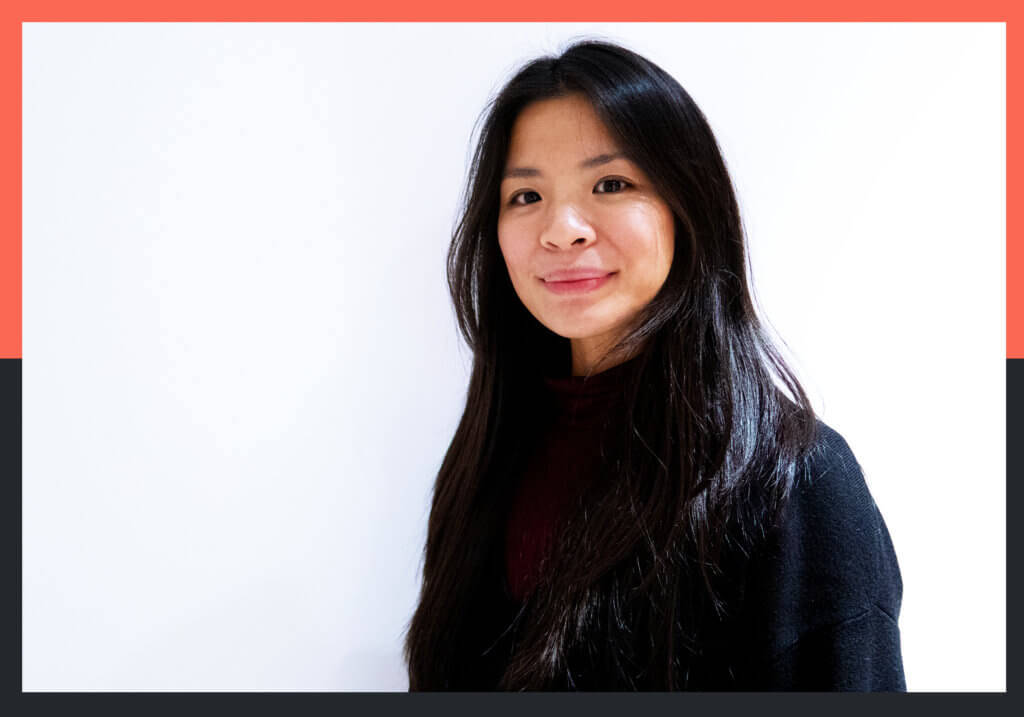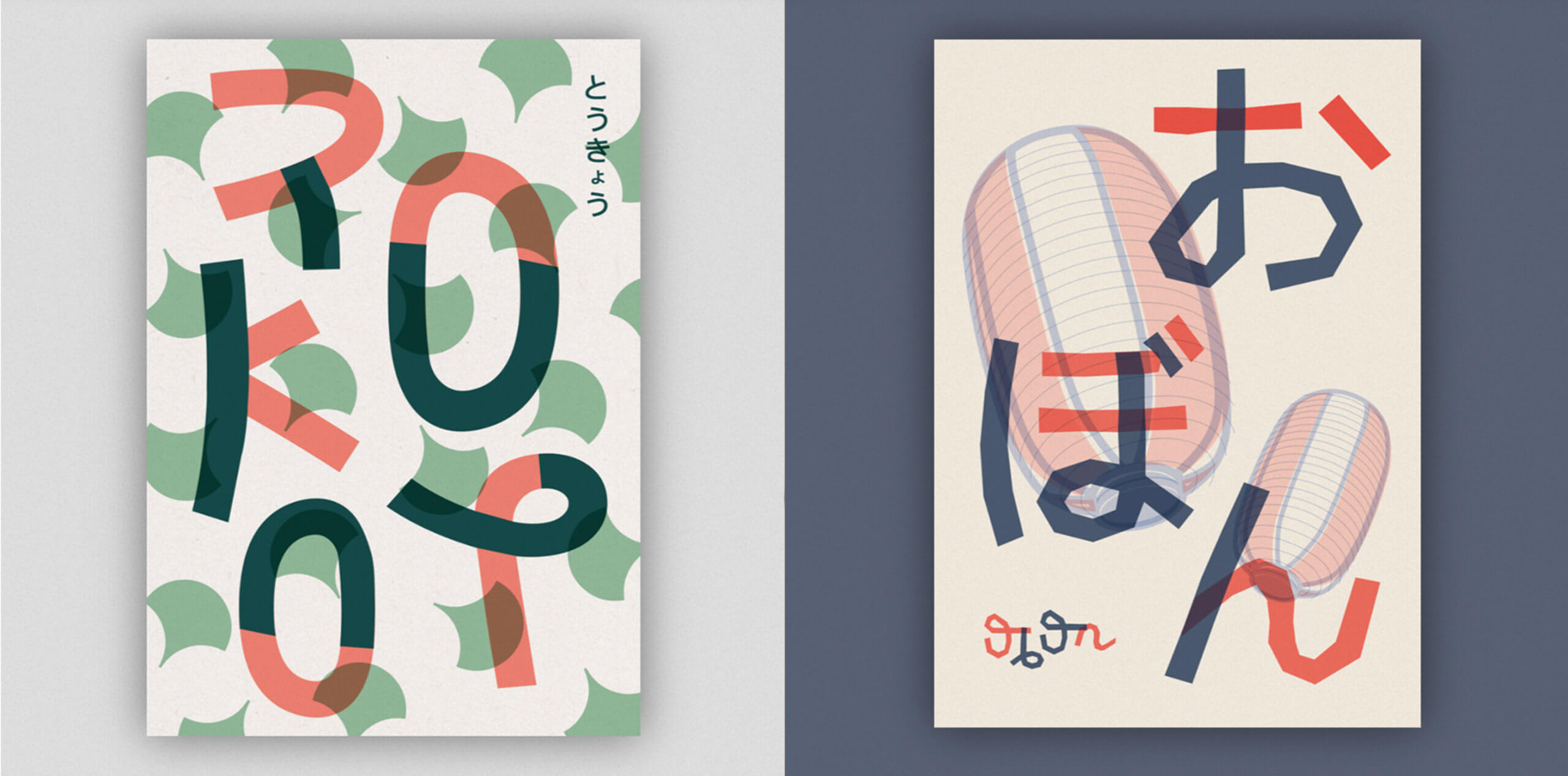After completing a degree in Ancient History and working in digital content and production roles, Helen Tong decided to re-shape her career and retrain as a graphic designer. Always enjoying finding ways to express her creativity, Helen decided to finally pursue her passion by enrolling on Shillington London’s three-month full-time intensive course at the start of 2020.
She hasn’t looked back since and has developed a sophisticated and well-crafted portfolio, that has led to freelance work since completing the course. Studying at Shillington was an immersive process for Helen. She was able to learn quickly through practical project briefs, whilst developing creative confidence and building her technical skills. One important learning curve for Helen was that having a strong concept behind every project is crucial, “the stronger your concept idea the easier your design process will be… Sometimes if things aren’t working out, it’s worth taking a step back, revisiting your initial thoughts and solidifying them before moving onto the next part of the process.”
Currently freelancing at branding agency Childish Design, Helen has developed a strong visual style, which is both fun and sophisticated. Sources of inspiration include travelling and Japanese culture and this is evident in her work, in which elegantly balanced layouts and bold typography are injected with playfulness through colour and illustrative elements. Branding and packaging design are currently her main areas of interest because they offer opportunities to develop a concept across multiple touchpoints and utilise creative problem-solving skills.
As a designer at the start of her career, Helen believes it’s important for companies and agencies within the creative industries that have all male leadership teams and/or lack diversity to re-evaluate the way they operate. Approaching other people in the industry who have successfully addressed gender imbalance and inequality could be a way forwards, with everyone being more vocal in asking for advice and sharing ideas. She feels that, “it’s important for women to see other women within the creative industry who have made it into those top positions, but it’s also important for men to be involved so that they can understand the challenges and be part of the discussion and solution rather than being seen as the enemy.”

We chatted with Helen to learn more about where she gets her inspiration, how she approaches a new project and her thoughts on the future of design.
Why did you decide to become a designer and how has your ambition evolved over time?
I took the plunge to become a designer only recently, but it’s been something I’ve wanted to do for a very long time and never quite had the courage to do until the end of last year. Since I was little I’ve enjoyed creative activities and was drawn to anything art or design-related. But when I was growing up I didn’t take the route to becoming a designer or artist, something which I’ve long regretted. In my previous career working within digital-based roles, I was always looking for ways to express my creativity by either initiating little projects or getting involved with those that had some element of design, but they were always pretty short-lived. I was getting to a point where I knew I wasn’t happy and that was when I decided to quit my job and enrol on a design course.
Where did you study and what do you know now that you wish you’d known when you started your design course?
I studied at Shillington and did their full-time three-month course. I was hesitant to take too much time out to study or study part-time and work as I didn’t feel I would be able to fully immerse myself into the course, so this option was the perfect for me. The course was intense, but I learnt so much, not just the technical skills but also the processes and what it’s like to work in the industry. What I learnt at Shillington and am still learning now – and wish I’d known when I started my course – is that the stronger your concept the easier your design process will be. There were so many times when I really struggled with the direction a design was going because I wasn’t clear what the idea or concept behind it was. Sometimes if things aren’t working out, it’s worth taking a step back, revisiting your initial thoughts and solidifying them before moving onto the next part of the process.
How have you grown over time and developed through your education and career so far?
I used to be very scared of things not working out. I was afraid to show people unpolished work and thought my work wasn’t good enough, On my first day at Shillington when one of our teachers said: ‘Leave any doubts at the door, be present and just take it all in, and don’t be afraid to fail, the quicker you do that the quicker you’ll learn.’ Since then my attitude towards these things has slowly changed. I’ve become more used to failing and accepting that it’s all part of learning. It happens all the time. You find out what didn’t work and you try again. It’s made me less precious about showing people work that isn’t ‘perfect’. Design is an explorative and iterative process and people often want to see the journey rather than the finished product. It’s allowed me to become more confident in the work I create, to stop being too hard on myself and comparing myself to others.
Recently, there has been lots of discussion in the design industry around the gender pay gap and how few women progress into senior positions. As a young/new creative do you have any thoughts on how we can counteract this imbalance?
I think it’s about senior leadership within agencies and companies having a more honest and open conversation with themselves, their employees, and others in the industry. They need to reflect on whether they’re contributing to the issue and ask difficult questions about what could be done to improve things. For companies/agencies that have all male founders or an all-male leadership team, maybe it’s time for them to re-evaluate the way they work. Could they have a less hierarchical structure that allows women in more senior positions to have a say in the business? Or could they approach others in the field that have managed to nail the gender balance issue and ask for advice on how they can improve their set up — whether it’s a different way of calculating salaries, more mentorship, or just understanding the positive changes women can make for the business and the work created.
I also think it’s about helping women within the industry with their self-confidence whether it’s through workshops or mentorships; letting them see that they’re capable of getting into those leadership positions and encouraging them to believe in themselves and valuing their worth. It’s important for women to see other women within the creative industry who have made it into those top positions, but it’s also important for men to be involved so that they can understand the challenges and be part of the discussion and solution rather than being seen as the enemy.
Has the Covid-19 pandemic impacted your career and how have you managed this?
When the UK entered lockdown in March, I was still studying. There was a definite panic around what would happen after graduation in April and I wasn’t sure whether I’d be able to find any opportunities at all. However, I found the creative industry to be really supportive of graduates. There were a lot of events and workshops going on to help new designers deal with the current situation. We were encouraged to reach out to people to connect, set our own briefs to keep the momentum going and to get our work out there, alongside the more practical stuff such as prepping our portfolio and applications, and not being afraid to ask people for feedback. Laying those foundations that would help in the long run when things start picking up again.
Since April, I’ve been lucky enough to find work and I’m currently freelancing at Childish Design, a branding agency for start-ups championing health, sustainability, and equality. It’s been an incredible experience so far and I’ve learnt a crazy amount already so I’m excited to keep growing and take on more challenges. Although 2020 hasn’t quite been how I imagined it to be, I’m super grateful for the opportunities I’ve come across and the chance to meet new people, build new skills, and still be able to pursue my passion. This whole year has been a huge learning curve and the uncertainty of how things are at the moment has taught me to go with the flow, that it’s ok to take things a step at a time and try and be hopeful about what might be around the corner next.
Where do you get your inspiration from and how do you approach a new project?
My inspiration is usually a mixture of cultural influences such as history, film, books, and other creatives out there. I love looking for inspiration in other people’s processes too. I recently watched a documentary about Studio Ghibli and the way they work, and it was inspiring to see where they get their ideas from and the way they try and push their concepts as far as possible to create something different. Sometimes though, inspiration comes from my own experiences and memories. On a couple of my projects I’ve been inspired by the places I’ve travelled to and my feelings of being there and I try to bring those emotions into the designs.
In terms of approaching a new project, I think I’m pretty methodical. I like to start off with pen and paper and just jot down anything that comes to mind. From there I’ll find things that spark an inspiration, a visual or a possible direction, and I’ll move onto trying to gather as much reference imagery as possible to get a general feel of the design (I probably spend way too long on this stage!). I’ll then sketch out variations of the designs, before replicating them digitally and continuing with different iterations trying out various fonts/layouts/colours etc. Once a design has been decided, I’ll refine and make sure that little things haven’t been overlooked.
Which female(s) designer/illustrator/artist/thinker/photographer has most inspired you?
Yuko Shimizu has been a huge inspiration of mine. I love her work but the thing that inspires me most about her is how she got to where she is and her attitude to things. She didn’t start her illustration career until she was 33, having worked 11 years in a corporate job in Japan before quitting and moving to New York to study. It shows that no matter where you are in your life, it’s ok to start again and follow your passion. Having decided on a career change at 30, I was worried I’d be too old to get started within the design industry, but she’s always shown to me that with enough perseverance it’s possible to get to where you want to be and do what you love.
Where do you think the design industry is heading in the next five years and how will you adapt?
I think it’s going to be even more human-centric than it is now. With technology playing an even bigger role, user experiences and journeys will become increasingly immersive and designers will be required to create holistic and coherent designs across every touchpoint. With design becoming ever more integrated into larger and more complex systems, there’ll be even more of a need to work collaboratively with teams of varying expertise and stakeholders. I think for me it’s about actively asking questions and looking to others to understand and learn how to incorporate these things into my own ways of working and thinking as soon as possible, so that it becomes the norm.
Who are your top five female design/illustration/creative crushes currently working in the industry?
- Yuko Shimizu, a Japanese illustrator. I love her detailed, often surreal ink illustrations that are influenced by the things she grew up with in Japanese popular culture of the 60s and 70s. @yukoart
- Chris Campe, a designer based in Hamburg. I’m obsessed with her lettering work and it always makes me appreciate the endless possibilities of type and what you can create with just letters. @allthingsletters
- Louise Lockhart, an illustrator based in Yorkshire. Her work always brings a smile to my face, it’s so playful and I love the different mediums she uses to create her illustrations and artwork. I’m a sucker for anything colourful and vintage-inspired and Louise’s work manages a perfect blend of both. @theprintedpeanut
- Alena Kudriashova, an artist based in Singapore. She creates beautiful ink and watercolour sketches of her travels, documenting the people, the places, the scenes. I love how her sketches always feel so free and loose but she’s still able to capture all the little nuances. @mysquiggles
- Hayley Sheldon, an installation and display artist, and painter. I came across Hayley’s work only recently, but I quickly fell in love with her candy coloured palette, and the different types of installation she creates using different textures. I can’t get enough of her most recent project, where she’s created very simple geometric shapes and woven them to various shape screens for an installation. @hayleysheldon




